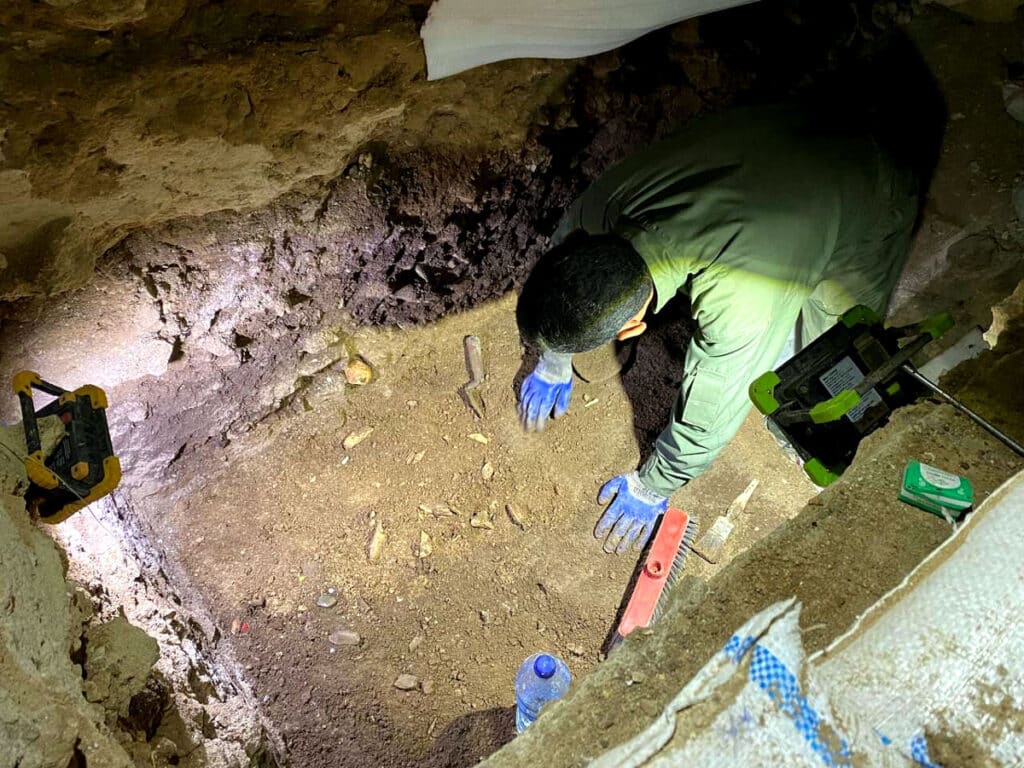175,000-Year-Old Neanderthal Tooth Found on Dig in Iran
A Groundbreaking Find in Ghaleh-Kord Cave

Researchers have made a monumental discovery in the Ghaleh-Kord Cave in Qazvin, revealing the oldest human remains ever found in Iran, dating back to 175,000 years ago.
Situated near a village of the same name, east of Mount Sari in the Hesar-e Valiasr district of Avaj County, Qazvin Province, the site has gained fame with recent archaeological findings.
The area is notably well-preserved, primarily due to its dry conditions and lack of moisture, which archaeologists believe is crucial for the conservation of animal remains.

Contents
A Rich Trove of Animal Remains
The Ghaleh-Kord Cave has yielded a rich collection of faunal remains, constituting a significant portion of the cultural materials unearthed. Among these are large mammals including various species of equids, bovids, and deer, highlighting the biodiversity of the area in prehistoric times. Particularly noteworthy is the abundance of different species of wild horses and the presence of an extinct species of Pleistocene horse known as Equus hydruntinus.

In addition to these large mammals, the discovery of extinct two-horned rhinoceros (Stephanorhinus hemitoechus) and brown bears (Ursus arctos) from the Pleistocene period adds to the site’s significance.
Human Remains and Stone Tools
Beyond animal remains, archaeologists have found stone tools and human remains that draw significant attention. Hamed Vahdati Nasab, the head of the excavation team at Ghaleh-Kord Cave, shared insights into the cave’s history and the importance of these discoveries.

Explorers have known about the cave for approximately 60 years, engaging in spelunking activities. However, it was only 12 years ago that stone tools were discovered at the cave’s entrance, sparking interest in its archaeological potential.
Excavations began in 2019 under the leadership of Vahdati Nasab and Dr. Gilles Berillon from the Musée de l’Homme, Paris, although they faced interruptions due to the COVID-19 pandemic.

The Neanderthal Child’s Tooth: A Remarkable Discovery
Among the findings, a child’s tooth stands out, now considered “the oldest human remains discovered in Iran.” This tooth, belonging to a Neanderthal child aged between 9 and 11, was found in a layer dating back 175,000 years, alongside contemporary stone tools.
This discovery places Ghaleh-Kord Cave among the sites with the oldest human remains in the region, further highlighted by comparisons to 1.7 million-year-old human remains found in Georgia.
Conservation Challenges
The Ghaleh-Kord Cave faces threats from looting and illegal excavations, posing challenges to its preservation. Despite these difficulties, the cave has been nationally registered, and measures are in place to protect this significant archaeological site.



Exhibition of Discoveries
The fascinating finds from Ghaleh-Kord Cave, including the 175,000-year-old child’s tooth, are currently on display at the National Museum of Iran in an exhibition titled “Selections from Recent Archaeological Excavations in Iran.”
This landmark discovery not only sheds light on the ancient history of human and animal life in Iran but also emphasizes the need for ongoing research and conservation efforts to protect these invaluable cultural heritage sites.
Read More



